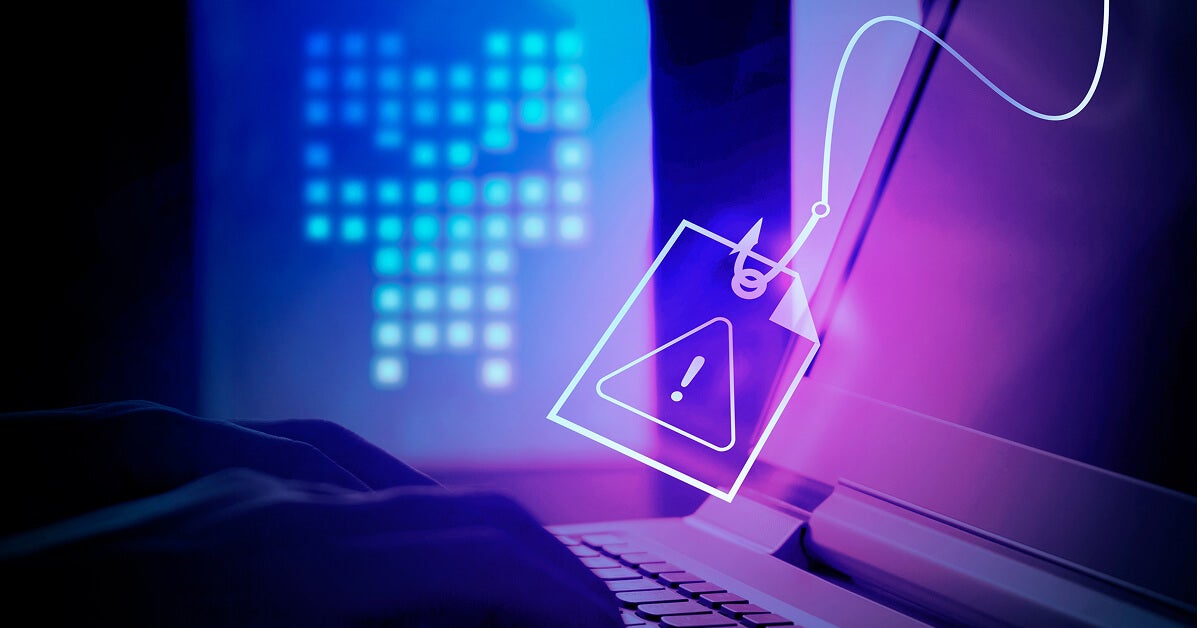Phishing remains one of the most common and damaging cybersecurity threats facing individuals and organizations today. These attacks are often deceptive, typically sent in the form of emails or messages that convincingly mimic legitimate sources to manipulate users into revealing sensitive information or executing malicious actions. From financial loss and data breaches to reputational harm, the consequences can be severe. As phishing tactics grow increasingly sophisticated, understanding how to recognize, mitigate, and prevent these attacks is crucial.
In this comprehensive guide, we’ll explore the fundamentals of phishing prevention, how to spot a phishing attempt, and 10 practical ways to protect your organization. We’ll also demonstrate how Sangfor Endpoint Secure serves as powerful protection against modern phishing threats.

What is a Phishing Attack?
A phishing attack is a form of cyber threat where attackers send deceptive messages, often appearing legitimate, to trick recipients into taking harmful actions. These may include clicking on malicious links, downloading infected files, sharing confidential data like passwords or credit card numbers, or even transferring funds to fraudulent accounts.
The term “phishing” is a play on “fishing,” reflecting how attackers cast wide digital nets in hopes of luring unsuspecting victims. Unlike traditional cyberattacks that exploit system vulnerabilities, phishing targets human psychology, manipulating trust, fear, and urgency to bypass technical safeguards and gain direct access to valuable information or systems.
What is Phishing Prevention?
Phishing prevention refers to the comprehensive strategies, technologies, and policies designed to detect, block, and mitigate phishing attacks before they cause harm. It focuses on stopping deceptive messages—delivered via email, SMS, phone calls, or messaging platforms—from tricking users into revealing sensitive information or downloading malware.
An effective phishing prevention strategy includes both technical defenses and human-focused training. This means using tools like email filtering, AI-driven endpoint protection, and DNS security, while also educating employees to recognize and respond to threats.
Key goals of phishing prevention include:
- Identifying and stopping phishing attempts before they reach users
- Blocking malicious links, files, or spoofed websites
- Raising awareness through training and simulated phishing exercises
- Minimizing impact through incident response and rapid containment
Since phishing tactics constantly evolve, phishing prevention must be proactive, multi-layered, and continuously updated to safeguard all possible points of attack.
How to Identify a Phishing Attack?
Identifying a phishing attempt is often more difficult than it seems. Attackers frequently impersonate trusted entities, such as banks, government agencies, or internal company departments, and use emotional manipulation to drive action.
Here are some common characteristics of phishing attempts:
- Urgent or threatening language: Phishing emails often use scare tactics like “Your account will be locked!” to pressure immediate action. This urgency is meant to override caution and prompt quick, unthinking responses.
- Suspicious sender addresses: Phishers mimic real domains, such as those of banking institutions or financial service providers, using slight alterations (e.g., @paypa1.com). Always inspect the full sender address carefully—minor misspellings or extra characters are common indicators of fraud.
- Generic greetings: Legitimate organizations usually address you by name. Phishing attempts often use generic salutations like “Dear Customer,” signaling mass messaging without personalized engagement or proper user verification.
- Unexpected attachments or links: Be wary of emails urging you to click unfamiliar links or download unexpected attachments. These may contain malware or redirect you to fraudulent sites designed to steal information.
- Typos and grammatical errors: Many phishing messages contain spelling mistakes or awkward grammar. While some are polished, errors often reveal unprofessional or hastily created content used in mass scams.
- Mismatched URLs: Hover over hyperlinks before clicking—if the URL differs from what’s displayed or redirects unexpectedly, it’s likely a phishing attempt trying to lure you to a fake site.
Awareness of these signs is key to early phishing detection and prevention.
10 Tips to Prevent a Phishing Attack
Fortunately, there are numerous ways for phishing prevention, providing adequate cyber protection for your organization.
1. Educate Employees Regularly
Employee awareness is the first line of defense against phishing. Many phishing attacks succeed not because of sophisticated techniques, but due to a lack of user vigilance. Regular cybersecurity training helps staff identify common phishing tactics for protection and avoid falling victim. Organizations should conduct simulated phishing campaigns to test and improve employee response. These simulations mimic real-world scenarios and provide insights into areas that require further training. Furthermore, training should evolve to include emerging threats and tactics, ensuring that employees are always prepared to handle new phishing vectors. An informed workforce significantly reduces the likelihood of successful phishing attacks.
2. Deploy Email Filtering Tools
Phishing attacks frequently begin with deceptive emails, making email security tools a critical component in any prevention strategy. Advanced email filtering systems analyze message content, sender authenticity, embedded links, and attachments. They detect anomalies and flag or block suspicious emails before they reach the user. Tools equipped with sandboxing capabilities can open attachments in a safe environment to inspect for malicious behavior. By integrating machine learning, modern filters adapt over time, identifying emerging phishing techniques more accurately. Implementing a robust email filtering solution minimizes exposure to phishing emails, safeguarding communication channels within the organization.
3. Enable Multi-Factor Authentication (MFA)
Multi-Factor Authentication adds an extra security layer by requiring users to provide additional verification factors beyond just a password. Even if credentials are compromised in a phishing attack, MFA can prevent unauthorized access to systems and data. Common MFA methods include SMS codes, authenticator apps, biometric verification, or physical tokens. Enabling MFA across all critical systems significantly reduces the risk of account compromise. Organizations should enforce MFA policies, especially for administrative and high-privilege accounts. When layered with other security practices, MFA serves as a formidable protection against phishing-driven credential theft.
4. Keep Software and Systems Updated
Outdated software often contains vulnerabilities that cybercriminals can exploit through phishing attacks. Keeping all systems, applications, and security tools up to date ensures that known vulnerabilities are patched. Regular updates close security gaps, enhance stability, and reduce exploitable weaknesses. Organizations should maintain a consistent patch management schedule and utilize automated tools to track and deploy updates. This approach minimizes downtime while maximizing protection. Ignoring software updates leaves systems vulnerable to malware and ransomware, often delivered via phishing emails. Maintaining an up-to-date infrastructure is a foundational element of cybersecurity hygiene.
5. Verify Suspicious Communications
Phishing attacks often rely on impersonation—pretending to be a colleague, vendor, or executive. Training employees to verify suspicious requests can prevent potential breaches. Users should be encouraged to independently contact the sender using trusted communication channels rather than replying directly. Organizations can implement verification protocols for high-risk actions, such as financial transactions or credential sharing. Using digital signatures or company-wide secure communication platforms can also help confirm authenticity. Cultivating a culture where employees feel empowered to question suspicious messages fosters a more secure environment and helps identify phishing threats early.
6. Use Web Filtering and DNS Protection
Web filtering and DNS protection tools prevent users from accessing malicious websites, often linked in phishing emails. These solutions analyze URLs and domain names in real time, blocking access to known phishing sites or pages attempting credential theft. DNS filtering adds an additional layer by preventing the resolution of harmful domains, thereby stopping the attack at the infrastructure level. Implementing these tools reduces the likelihood of malware downloads and fraudulent logins. When integrated with endpoint and network security platforms, web filtering creates a comprehensive defense perimeter that protects users even when they inadvertently click a phishing link.
7. Establish Strong Access Controls
Limiting user access based on roles and responsibilities minimizes the impact of a successful phishing attack. Strong access controls ensure that users only have permission to access the data and applications necessary for their job functions. This principle of least privilege reduces the risk of lateral movement within the network should an account be compromised. Role-based access control (RBAC) policies, regular audits, and user access reviews help maintain a secure access environment. Access controls are particularly vital in environments with sensitive data, where unauthorized access could lead to significant legal and financial repercussions.
8. Backup Data Regularly
Regular data backups are essential for minimizing the damage of a successful phishing attack, particularly those involving ransomware. Backups should be stored securely, preferably offline or in immutable cloud storage, to prevent tampering. Organizations must test their backup and recovery processes routinely to ensure reliability in the event of an incident. Automated backup solutions reduce the burden on IT staff and ensure consistency. In the event of a data breach, having reliable backups allows for rapid restoration, minimizing downtime and preserving business continuity. Backups are your safety net when all other defenses fail.
9. Monitor Network Behavior
Proactively monitoring network behavior helps detect unusual activity that may signal a phishing attack. Security Information and Event Management (SIEM) systems collect and analyze logs from across the network, alerting administrators to potential threats. Unusual login times, abnormal data transfers, or access attempts from unknown locations are all indicators of compromise. Early detection allows security teams to respond swiftly, isolate affected systems, and prevent further damage. Network monitoring should be continuous and integrated with threat intelligence to remain effective against evolving attack vectors. Visibility is key to stopping phishing attacks before they escalate.
10. Implement Endpoint Protection Solutions
Endpoints are frequent targets for phishing-related payloads, such as keyloggers or ransomware. Implementing advanced endpoint protection ensures that these threats are detected and neutralized promptly. Modern solutions use behavior analysis, AI-based detection, and automated remediation to identify and respond to threats in real time. Features such as process isolation, threat hunting, and rollback capabilities enhance resilience against phishing. Centralized management allows security teams to monitor and control endpoints across the organization. Endpoint protection acts as the final barrier, ensuring that even if phishing emails bypass other defenses, the endpoint remains secure.
Enable Phishing Prevention with Sangfor Endpoint Secure
Preventing phishing attacks is a multifaceted effort that requires vigilance, education, and the right technology. As phishing tactics continue to evolve, organizations must adopt proactive, intelligent solutions to remain one step ahead. Traditional tools alone can no longer keep up with the agility of modern phishing attacks. Sangfor Endpoint Secure offers a cutting-edge solution that combines AI-driven detection, behavioral analysis, and real-time response to stop phishing at the source.
While no system is 100% immune, Sangfor Endpoint Secure combines strong user awareness and robust endpoint security, significantly reducing the risk of successful phishing attempts.
Here’s how Sangfor Endpoint Secure protects your organization:
- Real-Time Endpoint Monitoring: Continuously monitors endpoints for indicators of phishing attacks, such as suspicious processes or abnormal network behavior.
- Automated Threat Response: Automatically isolates compromised devices, terminates malicious processes, and deletes phishing payloads to prevent spread.
- AI-Driven Detection: Utilizes machine learning models to identify both known and novel phishing techniques, including fileless and memory-based attacks.
- Behavioral and Anomaly Analysis: Detects unusual behaviors that could signal a phishing attempt, even in zero-day scenarios.
- Visual Attack Chain Analysis: Offers graphical insights into how an attack unfolds, helping security teams understand entry points, lateral movement, and potential impact.
- Integrated Defense Framework: Seamlessly integrates with Sangfor’s network and cloud security platforms, enabling centralized visibility and coordinated response.
- Regular Reporting & Threat Intelligence: Provides detailed reports and updates on threats, attack vectors, and response actions, ensuring stakeholders stay informed.
- User Awareness Reinforcement: Augments technical defenses by providing insights into user behavior and policy adherence, supporting continuous improvement of internal awareness.
Whether you’re a small business or a large enterprise, making anti-phishing a cornerstone of your cybersecurity strategy is no longer optional—it’s essential. Contact Sangfor today to learn how you can build a safer, more resilient digital environment.
FAQ
Immediately disconnect from the internet to prevent further compromise. Report the incident to your IT or security team. Change any exposed passwords and enable multi-factor authentication. Monitor accounts for suspicious activity and run a full antivirus scan. Quick response reduces damage and limits the attacker's ability to exploit stolen data.
Yes, industries like finance, healthcare, education, and government are frequently targeted due to their sensitive data. Executives, HR personnel, and finance staff are also high-risk individuals. Their access to confidential information makes them valuable phishing targets, requiring enhanced protection, stricter access controls, and regular cybersecurity awareness training.





